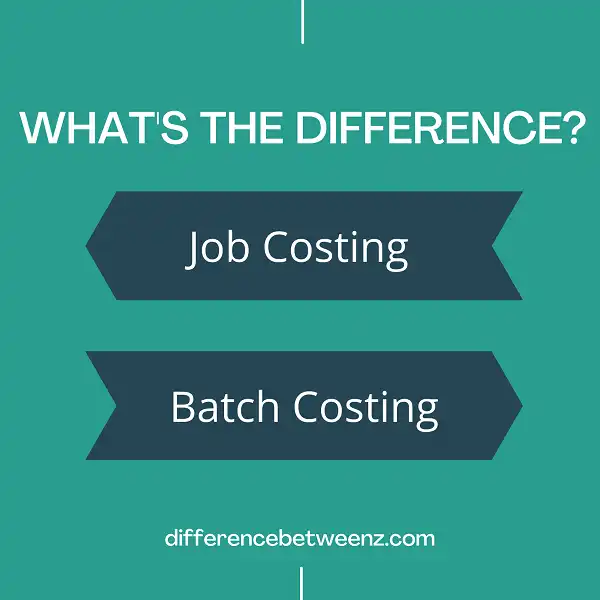Job costing and batch costing are two common methods of cost accounting. Though both methods serve the same purpose, there are some key differences between the two. We will take a closer look at what those differences are and how they can affect your business. We hope this information proves useful to you as you make strategic decisions for your company.
What is Job Costing?
Job costing is an accounting system that tracks the costs associated with a specific job or project. This information can be used to determine the profitability of the job and to price future jobs more accurately. In order to create a job costing system, businesses must first track their direct expenses, such as materials and labor. They then allocate indirect expenses, such as overhead, to each job based on its share of the total costs. Once all of the costs have been allocated, businesses can use job costing to calculate the profit margin for each job. Additionally, businesses can use job costing data to assess which jobs are most profitable and make decisions about pricing and project management accordingly. Job costing is an essential tool for businesses that want to maximize their profits and improve their decision-making.
What is Batch Costing?
Batch Costing is a costing method that is used to assign manufacturing costs to products or batches of products. Unlike job costing, which assigns costs to specific projects, batch costing assigns costs to groups of products that are produced together. This method is often used in industries where products are manufactured in small batches, such as the food and beverage industry. In order to calculate the batch cost, the total cost of production is divided by the number of units produced. This total cost includes all direct and indirect costs associated with manufacturing the product, such as labor, materials, and overhead.
Difference between Job Costing and Batch Costing
Job costing is a system of accounting that tracks the costs associated with a specific job or project. This information can be used to price individual jobs, assess the profitability of projects, and compare costs across different jobs. Batch costing is a similar system that is used to track the costs associated with a group of products that are produced together. This information can be used to price products, assess the profitability of batches, and compare costs across different batches. The main difference between job costing and batch costing is that job costing focuses on individual jobs while batch costing focuses on groups of products.
Conclusion
Job costing is the process of determining the cost of manufacturing a particular product or service, usually on a per-job basis. This type of costing is most commonly used in industries where products are made to order, such as custom furniture or clothing. It can also be used in service businesses that have a variety of different services with unique costs associated with each. For example, an advertising agency might use job costing to track the cost of producing a television commercial versus creating a print ad. Job costing allows businesses to accurately charge their customers for the specific products and services they’ve requested, rather than guessing at a blanket price that may not cover all the costs involved.


